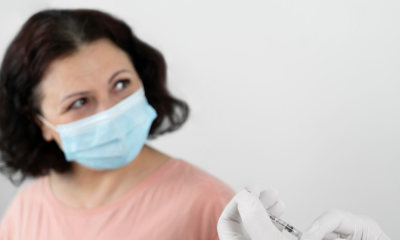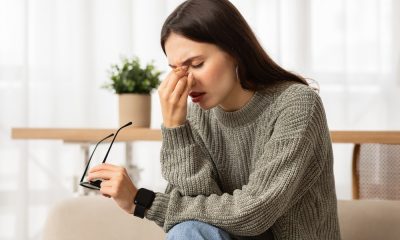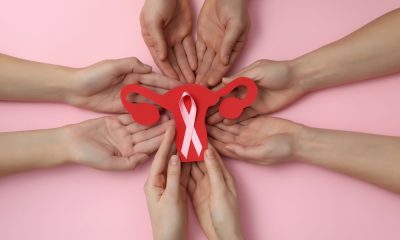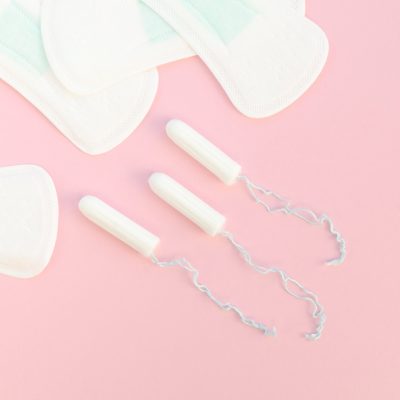pain conditions
Childhood trauma linked to higher risk of endometriosis, study finds

Women who experience trauma or hardship in childhood may have up to twice the risk of developing endometriosis later in life, new research has found.
A study involving more than 1.3 million women found those exposed to violence in childhood were over twice as likely to be diagnosed with the condition compared to those who were not.
The risk of endometriosis was 20 per cent higher in women who experienced any form of childhood adversity and rose to 60 per cent among those with five or more adverse experiences.
The research, conducted in Sweden, analysed data from women born between 1974 and 2001. More than 24,000 of them had received a diagnosis of endometriosis.
Researchers used national health and social records to examine childhood circumstances.
Factors included having parents with mental illness, intellectual disability, financial hardship or substance misuse, being born to a teenage parent, experiencing bereavement, or being exposed to violence or sexual abuse.
All factors studied—except bereavement—were linked to an increased risk of developing endometriosis in later life.
Marika Rostvall is first author of the study and a physician and doctoral student at the Department of Global Public Health at Karolinska Institutet.
The researcher said: “We also saw that the more adverse experiences in childhood, the higher the risk. Among those who had five or more factors, the risk increased to 60 per cent.”
The most significant increase was seen in women who had been exposed to violence, who had more than double the risk of being diagnosed with endometriosis.
Rostvall said: “The results suggest that early life experiences can affect the body’s health much later in life and highlight the importance of looking at the whole person, not just the symptoms.
“The findings are also in line with previous research showing that difficulties in childhood have profound consequences for future health.”
While the biological mechanism is not yet fully understood, Rostvall suggested two possible explanations.
One is that stress during childhood may impair immune system function, reducing its ability to remove endometrial tissue from the body.
Another is that trauma could increase sensitivity to pain, making symptoms more likely to be noticed and diagnosed.
Rostvall said: “I hope that the findings can be used to improve both preventive measures and treatment in healthcare,” she added.
As the study is observational, it does not establish a direct cause-and-effect relationship.
Insight
One in three Europeans unfamiliar with cystitis and UTIs, survey finds

One in three Europeans cannot identify cystitis as a bladder infection, with some mistaking it for conditions such as skin problems or food allergies.
A survey of more than 3,000 adults in France, Germany, Italy, Spain and the UK found 35 per cent could not define the condition.
Awareness was lowest among 18–24 year olds, with only 45 per cent answering correctly.
Prof Gernot Bonkat, chair of the EAU Infections Guidelines Panel, said the consequences are global.
Bonkat said: “Urinary tract infections affect over 400 million people worldwide and cause approximately 240,000 deaths each year, with rising antibiotic resistance making them harder to treat.
“This study shows that raising public awareness, as well as education about symptoms, causes and treatment, is still essential to prevent infections, reduce suffering and slow the spread of resistance. Not every infection needs to be treated with antibiotics — careful use is key to combating resistance.”
The European Association of Urology carried out the research for Urology Week 2025 (22–26 September), which this year focuses on UTIs and cystitis.
Although women are far more likely to develop UTIs, just 51 per cent of respondents recognised this. Almost one in five men wrongly believed men are more commonly affected. Women showed greater awareness, with 63 per cent identifying their higher risk compared with 38 per cent of men.
Knowledge of prevention was limited. While 71 per cent knew that drinking plenty of water helps, only 43 per cent mentioned hygiene measures such as wiping front to back. Just 35 per cent identified urinating after sex as a key prevention method. Seventeen per cent mistakenly thought taking antibiotics without medical advice could prevent UTIs.
Only 21 per cent of respondents identified all three main prevention strategies, while one in six could not name a single one. Women were three times more likely than men to identify all three.
Jane Meijlink, chair of the International Painful Bladder Foundation, said young women were of particular concern.
She said: “Many teenagers today are sexually active without understanding the risks of bladder infections.
“Young women in particular are more vulnerable because of their anatomy, yet too often they think the contraceptive pill protects them from all risks and that condoms are unnecessary.
“We urgently need to address this through school education and social media, otherwise we risk a new generation of young women suffering repeated urinary tract infections and even long-term bladder damage.”
Misunderstandings about antibiotics added to the problem.
While not every UTI requires treatment, 16 per cent believed antibiotics are always needed. Nearly half underestimated or were unaware of the growing difficulty of treatment due to resistance.
Prof Gernot Bonkat, chair of the EAU Infections Guidelines Panel, said the consequences are global.
Bonkat said: “Urinary tract infections affect over 400 million people worldwide and cause approximately 240,000 deaths each year, with rising antibiotic resistance making them harder to treat.
“This study shows that raising public awareness, as well as education about symptoms, causes and treatment, is still essential to prevent infections, reduce suffering and slow the spread of resistance. Not every infection needs to be treated with antibiotics — careful use is key to combating resistance.”
UTIs are the second most common infection after respiratory illnesses.
Around 50 to 60 per cent of women will experience at least one during their lifetime.
They are a major public health concern, with global costs estimated in the billions of euros annually.
News
Tens of thousands demand menstrual leave to be written into UK law
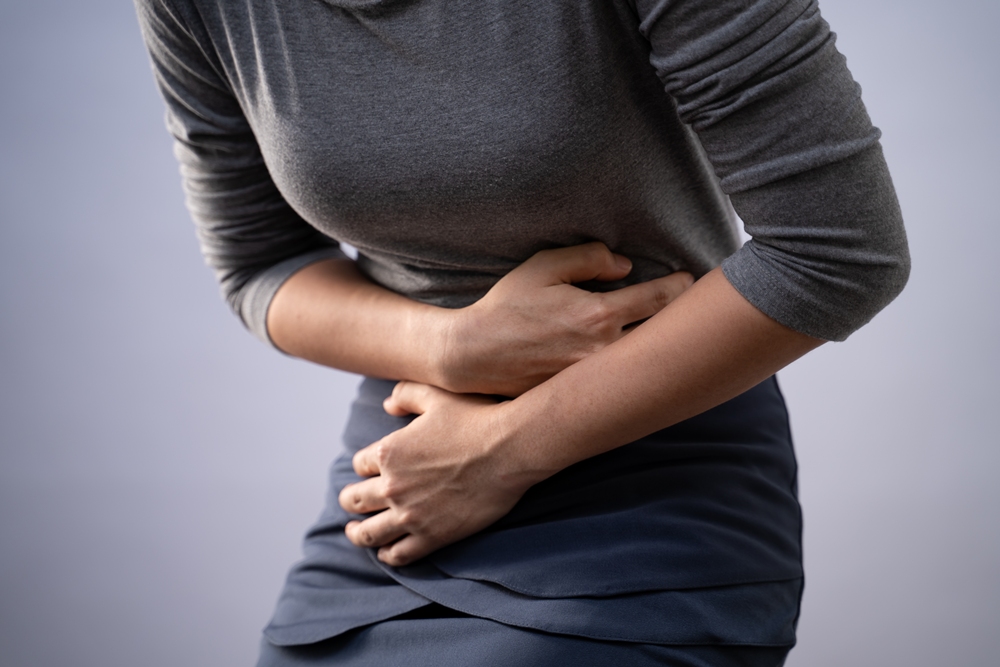
More than 65,000 people have signed a petition for menstrual leave to be added to UK employment rights law.
The campaign needs 100,000 signatures for a parliamentary debate.
It was launched by Scots mum Michelle Dewar, who endured chronic pain for nine years before being diagnosed with endometriosis – a condition where tissue similar to the womb lining grows outside the womb.
Dewar wants the UK to follow Portugal, which recently introduced paid leave for people with similar conditions. She says protections must include no loss of pay, benefits or seniority.
Endometriosis UK has welcomed the petition but argues the government should go further and recognise menstrual health conditions such as endometriosis and adenomyosis as chronic diseases that deserve the same workplace support as illnesses such as diabetes or asthma.
Writing in the Scottish Sun, Emma Cox, chief executive of Endometriosis UK, said workplace discrimination remains widespread due to limited understanding.
“The taboo and embarrassment around ‘women’s issues’ makes the topic hard or impossible to discuss with managers,” she said.
Examples include fears about being made to wear light-coloured uniforms during heavy bleeding, fluctuating symptoms that lead to staff being unfairly labelled as “flaky”, and absence management policies that penalise people for their condition.
The charity says absenteeism caused by heavy and painful periods, endometriosis, fibroids and ovarian cysts costs the UK economy nearly £11bn each year.
Endometriosis UK is calling for the Employment Rights Bill to require menstrual health action plans in workplaces, giving staff clear guidance on support.
It also wants the NHS to cut diagnosis times, which average eight years and 10 months for endometriosis, and to extend that target to adenomyosis too, aiming for one year or less by 2030.
Cox warned that the term “menstrual leave” could be misleading.
She said: “We fear the term ‘menstrual leave’ could be misunderstood to imply it is for everyone who has periods and could lead to discrimination, or perpetuate the myth that it is ‘normal’ to have severe symptoms and that those who can’t cope are ‘weak’.”
The charity runs an Endometriosis Friendly Employer Scheme and workplace training to help organisations understand the impact of both endometriosis and adenomyosis.
Insight
Endometriosis linked to hundreds of conditions across the body, study finds

Analysis of millions of health records shows endometriosis is connected to more than 600 conditions, including migraines, asthma and digestive disorders.
The research used algorithms to compare medical histories of people with and without endometriosis, confirming known associations and revealing new ones.
Scientists at the University of California, San Francisco examined data from the University of California’s Health Data Warehouse, which holds records for around eight million people from 2012 onwards.
Findings ranged from reproductive and autoimmune disorders to less-discussed conditions such as gastroesophageal reflux disease, asthma and vitamin D deficiency.
Endometriosis occurs when cells similar to those lining the womb grow outside it and on nearby organs.
Umair Khan is a PhD student in the biological and medical informatics programme at UCSF.
Khan said: “We identified hundreds of health conditions significantly associated with endometriosis, ranging from reproductive disorders and autoimmune diseases to migraines, asthma and gastrointestinal conditions.
“Many of these associations were present even before a formal endometriosis diagnosis, and almost half were replicated in an entirely separate dataset.
“We hope this study validates patients’ lived experience that endometriosis often comes with a variety of other health challenges.”
The large-scale approach allowed researchers to include millions of participants, making the study broader than previous research which usually focused on single conditions such as infertility.
Two notable findings stood out.
Women with endometriosis appeared less likely than others to have high cholesterol – which Khan described as “intriguing, given growing interest in statins as a potential treatment for endometriosis.”
Statins are cholesterol-lowering medicines that are also being explored for their potential to reduce the progression and symptoms of endometriosis.
The study also found a strong association with migraines, suggesting the two conditions may share biological pathways. Migraines often appeared in patients’ records before an endometriosis diagnosis.
Experts said the findings reinforce the view of endometriosis as a systemic disease, not just a pelvic disorder.
Inflammation, immune dysregulation and molecular signals such as microRNAs may help explain its widespread effects.
Research also suggests shared genetic pathways could account for links with conditions like migraine.
Clinicians note that understanding endometriosis as a whole-body condition highlights the importance of early recognition and management.
Patients may benefit from anti-inflammatory medicines not only for pain but to reduce broader systemic effects.
Researchers added that big data methods like those used here could help guide more personalised treatment strategies.
Work is now underway to apply predictive modelling and artificial intelligence to identify those at higher risk and to explore whether existing medicines can be repurposed for treatment.
-

 News3 weeks ago
News3 weeks agoDozens of women report suffering painful burns after using Always sanitary towels
-

 News4 weeks ago
News4 weeks agoCutting through the noise in femtech – key takeaways from Women’s Health Week 2025
-
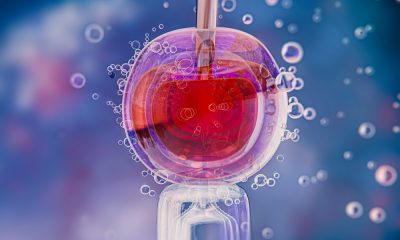
 News3 weeks ago
News3 weeks agoAI embryo selection tool wins European approval
-

 Mental health6 days ago
Mental health6 days agoOpinion: Not ‘just stress’ – How hormonal changes affect women’s brain function
-
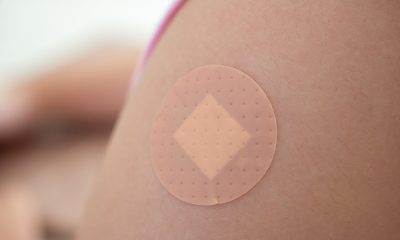
 Menopause3 weeks ago
Menopause3 weeks agoTestosterone patch shows promise for menopausal women
-

 Fertility4 weeks ago
Fertility4 weeks agoScientists develop breakthrough approach to detecting endometriosis in menstrual blood
-

 Features3 weeks ago
Features3 weeks agoFrom SEO to GEO: How women’s health brands can get found in the age of AI
-

 Menopause3 weeks ago
Menopause3 weeks agoFDA approves new menopause drug to treat hot flashes and night sweats




